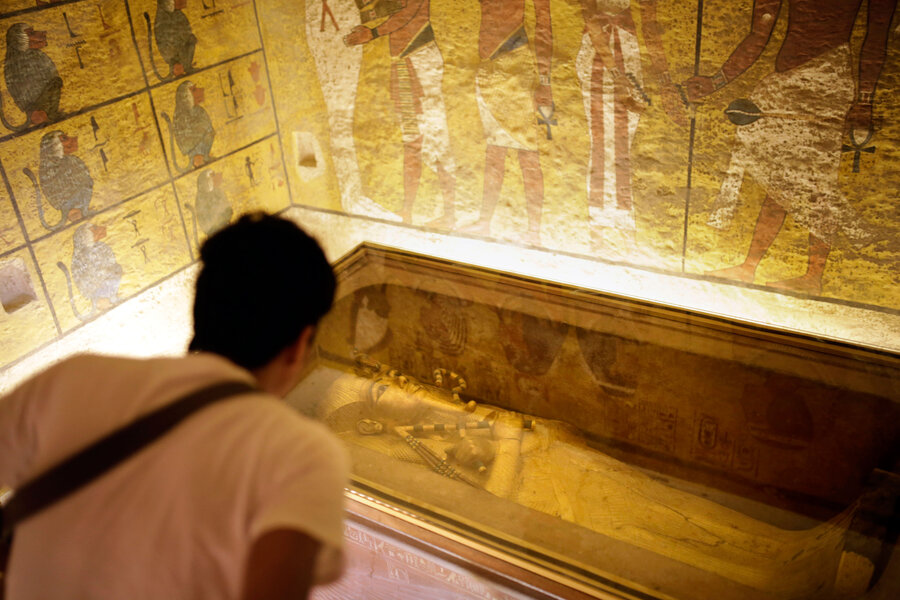Did King Tut have a roommate? In search of a secret chamber
Loading...
The news broke months ago that King Tut probably had a roommate, and archaeologists are trying to figure out who it could be.
To do so, Egyptologists have partnered with engineers and physicists who are using advanced technology to explore Egypt's ancient tombs without damaging them.
Archaeological methods have become much more sophisticated – and thus less destructive – over time. At every excavation, archaeologists must decide whether to dig or wait until technology advances. New technology can provide an alternative, with scans revealing the interior of sites without damage.
King Tut's tomb is the first site to be explored in a new project called "Scan the Pyramids" involving Egypt's Ministry of Antiquities, Cairo University, and the HIP Institute, a French institute using technology to study and preserve cultural heritage.
"Many theories have been proposed, either explaining (the tombs' and pyramids') construction or their structural anomalies, but we are physicists and engineers, not archaeologists," said Hany Helal, a Cairo University engineering professor and coordinator for the project, in a news release. "Our goal is to use techniques to get concrete results. Then the Egyptologists will interpret them."
Work began on Friday with a 24-hour infrared scan of King Tutankhamen's tomb. "The team was very impressed and full of emotion to spend the night in the tomb," Mehdi Tayoubi, HIP Institute president and co-director of the mission, told Discovery News.
The scanners can effectively look through the tomb's stone walls, because different materials return different frequencies of light when hit with infrared.
"What interests us most are potential cold spots on the surface, which could be drafty, therefore reveal cavities, rooms, or hallways, within the monuments," wrote Jean-Claude Barré from LedLiquid, a light technology facility in France, in a release for the project.
Results from the first 24 hours are already encouraging. The infrared scan revealed a temperature difference in the northern wall of King Tut's tomb, Egypt's Minister of Antiquities Mamdouh Eldamaty announced on Facebook. Scans will continue for another week to clarify the results.
The scan is following up on claims by Egyptologist Nicholas Reeves at the University of Arizona, who said high-resolution images of the tombs hinted at hidden doors to unexplored chambers, Discovery News reported.
Infrared technology has also scanned active volcanoes and the Fukishima nuclear reactors in Japan, and the team hopes the non-invasive technology can spread to other archaeological sites, said Dr. Helal.
As the Egyptology project continues, researchers say efforts to explore tombs and pyramids could include muon radiography imaging, 3D scans, and topographical scans via drones.








